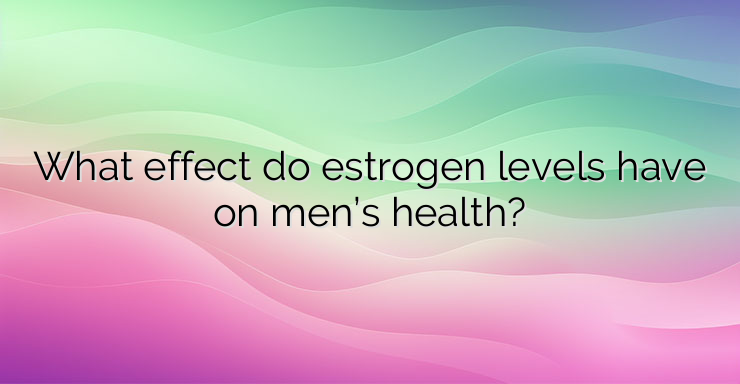What are the causes of high estrogen levels in men? A body can produce high levels of estrogen alone or in addition to lower levels of testosterone. Some drugs and substances that can increase estrogen levels include: Certain antibiotics; Herbs or other natural substances, such as ginkgo or ginseng; Phenothiazines (antipsychotic drugs) High estrogen levels are also passed down genetically. There are also some conditions that can increase estrogen levels, such as: Stress; Weight gain; Some tumors; Diseases that affect the liver; Conditions that affect hormone balance, such as hypogonadism; What are the symptoms of low estrogen levels in men? The male body produces estradiol, a form of estrogen, as a byproduct of the breakdown of testosterone by an enzyme called aromatase. Estrogen and testosterone levels are closely related. In fact, one of the main causes of low estrogen levels is low testosterone levels. Low estrogen levels in men are not as much of a cause for concern, although they may cause some of the symptoms of high estrogen levels because they may be the result of hypogonadism, a condition that results in a lack of hormone production in the body. Hypogonadism can lower levels of estrogen, testosterone, and other hormones, leading to many of the symptoms of high estrogen levels. What are the causes of low estrogen levels in men? Low estrogen in men due to hypogonadism can be due to a number of possible causes, including: Autoimmune conditions such as Addison’s disease or hypoparathyroidism; Genetic disorders such as Turner syndrome or Klinefelter syndrome; Genital infections such as mumps; Kidney or liver diseases; Cryptorchidism; Excess of iron in the blood (hemochromatosis); Radiation exposure; Human immunodeficiency virus (HIV); Conditions that affect the pituitary gland; Sarcoidosis; Tuberculosis; Histiocytosis; Obesity; Rapid weight loss; Lack of essential nutrients and vitamins; Brain surgery; A tumor on or near the pituitary gland; High or low estrogen levels are diagnosed through laboratory tests. Bibliography: Schulster M, et al. (2016). The role of estradiol in male reproductive function.


Leave a Reply